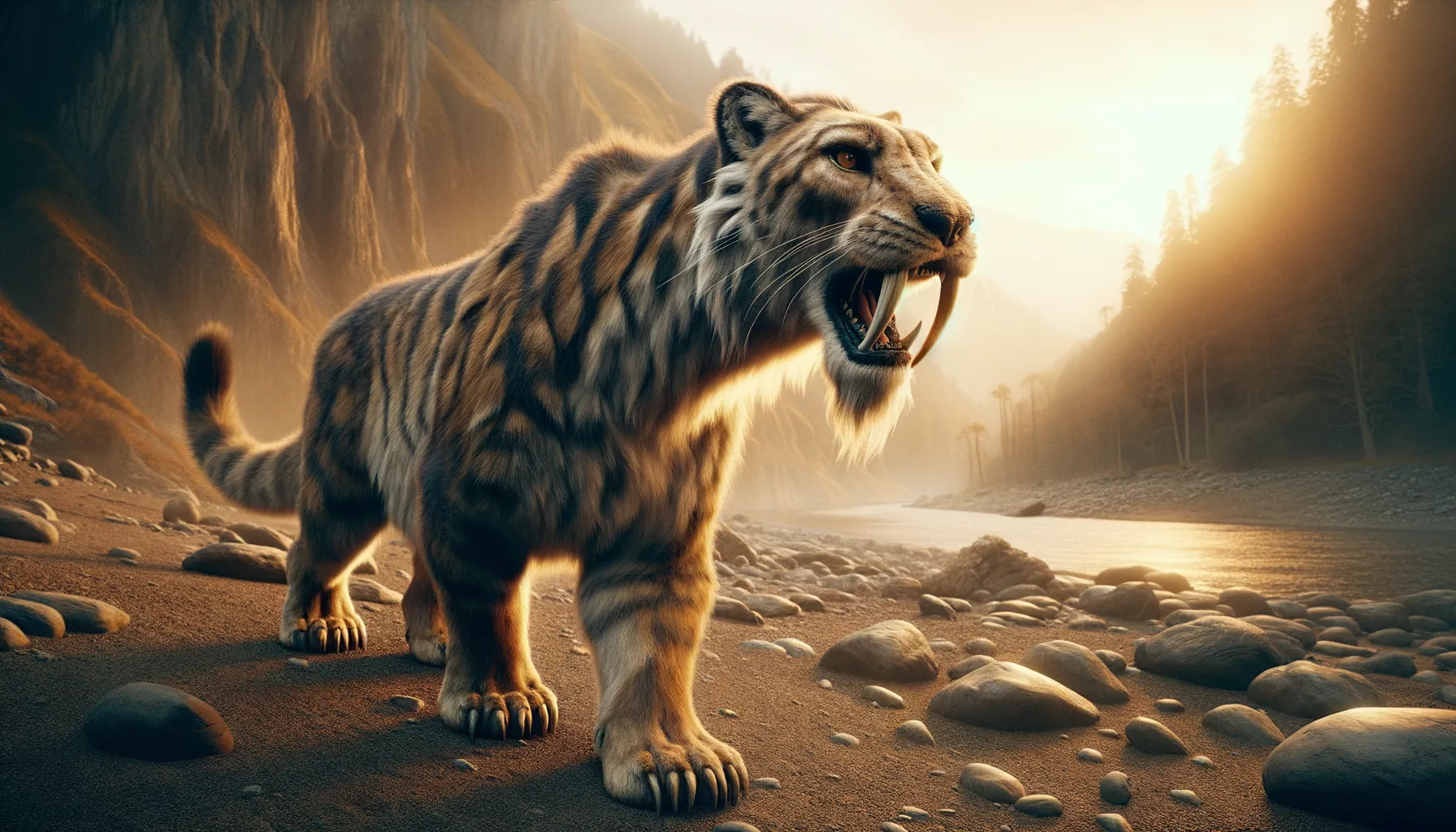
Smilodon
Saber Teeth of the Ancient World
Period
Pleistocene
Length
Around 5 to 7 feet long, excluding the tail.
Height
About 3.5 feet at the shoulder.
Weight
Up to 600 pounds, similar to a modern big cat.
Known as the saber-toothed cat, Smilodon was an impressive predator of the Pleistocene era, roaming the Americas. Its famous long canine teeth made it a fearsome hunter, but it was built more for strength than speed, relying on stealth and powerful forelimbs to subdue prey. Smilodon is often mistakenly called a dinosaur, but it was, in fact, a mammal that lived long after the dinosaurs went extinct.
Diet
Smilodon primarily fed on large herbivores such as bison and camels. Its robust build allowed it to take down prey much larger than itself, providing a rich source of nutrition.
Hunting
Unlike many modern big cats, Smilodon likely relied on stealth and ambush rather than outrunning its prey. It used its powerful forelimbs to pin down prey before delivering a deadly bite with its saber-like canines.
Environmental challenges
The end of the Ice Age brought significant changes that affected Smilodon’s habitat and prey availability. Climate shifts led to the extinction of many large herbivores, which were crucial to its diet. While it attempted to adapt, the changing landscape and food scarcity proved to be insurmountable challenges. The competition with emerging human populations also added pressure to its survival.
Speed
Smilodon was not particularly fast, opting for ambush tactics.
Lifespan
Typically around 20 to 40 years in the wild.
First discovery
First remains were discovered in Rancho La Brea, California.
Fun Facts
- Smilodon is often called the saber-toothed cat because of its impressive, long canine teeth.
- Unlike many modern big cats, Smilodon was built heavily with a robust body, making it one of the most powerful felines of its time.
- Smilodon lived during the Pleistocene epoch and coexisted with other large animals, such as mammoths and giant ground sloths.
- Fossils of Smilodon have been discovered mainly in North and South America, with the La Brea Tar Pits in Los Angeles being one of the most famous sites.
- Despite its fearsome appearance, scientists believe Smilodon was more of an ambush predator than a fast runner like cheetahs are today.
- Smilodon's nickname, 'saber-toothed tiger,' is actually misleading as it is not closely related to today's modern tigers.
- The extinction of Smilodon around 10,000 years ago is believed to be linked to climate change and the disappearance of large prey.
Growth and Development
From a young age, Smilodons grew rapidly, reaching maturity in their early years. They were born with small canine teeth that lengthened as they grew older, eventually developing into the iconic saber shape. Parental care likely played a significant role during their early development phases, ensuring their survival against predators and environmental pressures.
Habitat
Smilodons thrived in a variety of environments, from forested areas to open plains. Their adaptability allowed them to exploit different prey across these habitats. The presence of large herbivores like mammoths and mastodons in these regions provided ample food sources. They were also likely to inhabit areas with sufficient cover to aid in their ambush hunting strategy.
Interaction with other species
Smilodon coexisted with other large carnivores, competing for similar prey. Although not a pack animal, it might have had minimal social interactions with its own kind. Its presence would have influenced the behavior of both prey and competitors, as it was one of the apex predators of its time.
Natural lifespan
In natural conditions, Smilodon could live up to 40 years.
Reproduction
Smilodons likely reproduced in a manner similar to modern big cats, with courtship behaviors followed by a gestation period. Females gave birth to a small litter and provided care through their early, vulnerable stages. The young stayed with the mother until they could fend for themselves.
Social behaviour
While generally solitary, Smilodons might have had complex social structures similar to current big cats, occasionally cooperating in groups during hunts. Social interactions would be crucial during mating periods, although they were not as reliant on pack dynamics as wolves or modern lions.
Fossil locations
Most Smilodon fossils have been found in the La Brea Tar Pits in California, offering rich insights into their lives. Fossil remains have also been unearthed in various parts of North and South America. These discoveries provide crucial evidence for understanding their distribution and adaptation to different environments.
